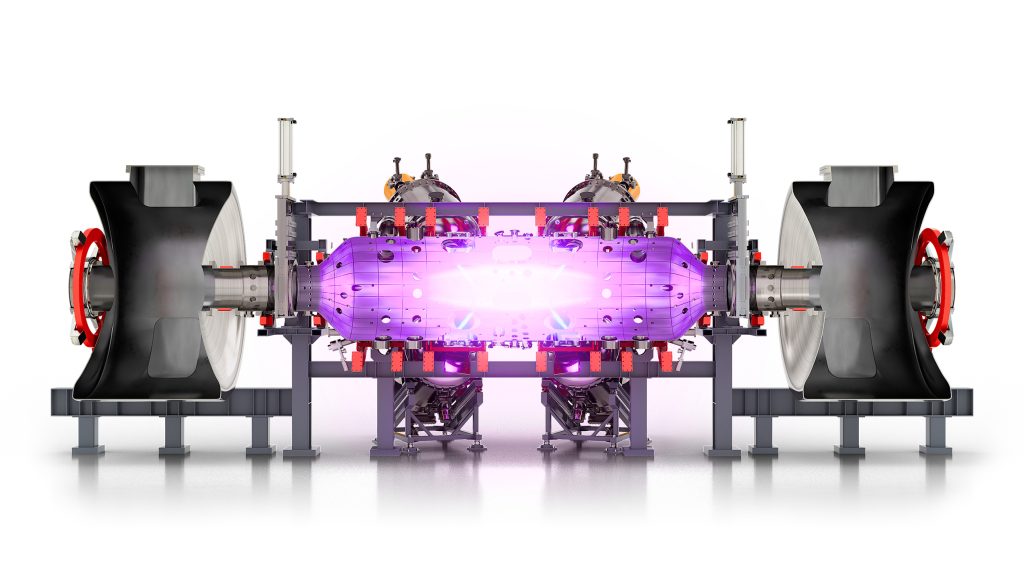TAE Technologies’ FRC Reactor Is Cheaper and Easier to Build than Dominant Design

TAE Technologies’ approach is centered around a Field-Reversed Configuration (FRC) reactor, offering a potentially more streamlined and cost-effective alternative to the dominant tokamak design.
For decades, the tokamak reactor has been the best choice in the fusion power industry. However, these reactors require huge, complicated superconducting magnetic coils and elaborate electromagnetic heating systems, requiring massive infrastructure investments and ongoing operational complexities.
TAE Technologies offers an alternative with its FRC reactor. By using a different type of fusion reaction combined with a new reactor design, the company came up with a simpler, more efficient way to build a commercial reactor compared to a tokamak. To reach it, they eliminate the massive, externally generated toroidal field.
Instead, they rely on a linear magnetic field and harness the plasma’s inherent properties to create its containment field. This is achieved by injecting high-energy, electrically neutral hydrogen ions into the plasma. On colliding with the plasma, these ions become re-ionized, releasing their energy and heating the plasma.
This process triggers toroidal currents within the plasma, which enhance over time and eventually invert the initial magnetic field. This inversion leads to the self-generation of the plasma’s containment field, offering the flexibility of real-time configuration for stability and pressure adjustment.
According to TAE, an FRC reactor can reach up to 100 times the fusion power of a tokamak, with the same magnetic field strength and plasma volume. This allows a simpler and more compact reactor design, lowering both construction and operational costs.
The company also adapted a new neutral beam injection system to improve on a previous experimental reactor, reducing not only the machine’s size and complexity but also the costs by 50%.
Moreover, the FRC approach also opens the door to fusion reactions as its reactor can be used with proton-boron aneutronic fusion. This reaction involves the fusion of a hydrogen nucleus and a boron-11 atom, offering significant advantages over the more conventional deuterium-tritium reaction.
The absence of neutrons causes less damage to the reactor. Not only that, the energy being released as charged particles is easier to harness, less shielding is required, and boron-11 is relatively abundant and is not radioactive. The proton-boron reaction produces three alpha particles (helium-4 nuclei) and a substantial amount of energy.
The new reactor is called Norm, smaller and less complex than its predecessor, Norman.

 Tech Steel & Materials
Tech Steel & Materials
Comments are closed